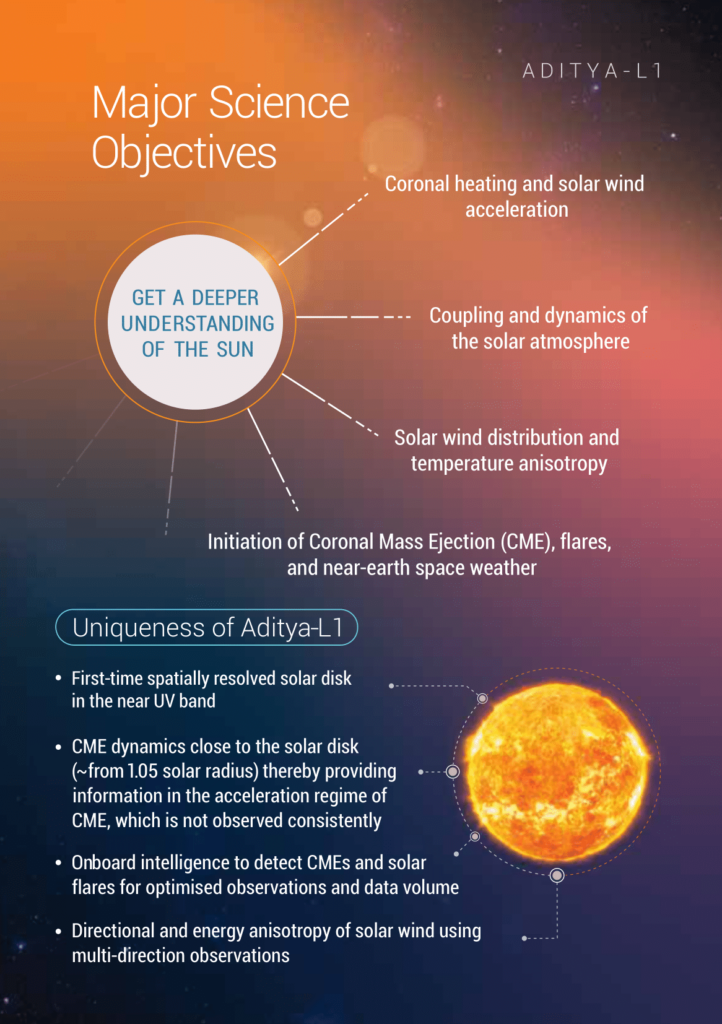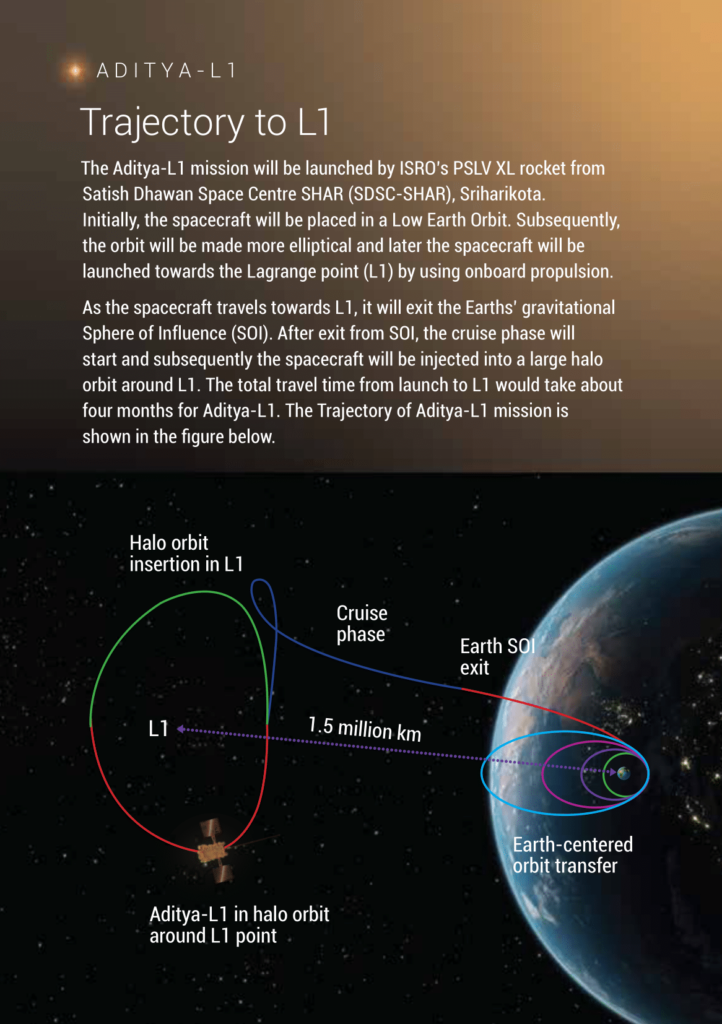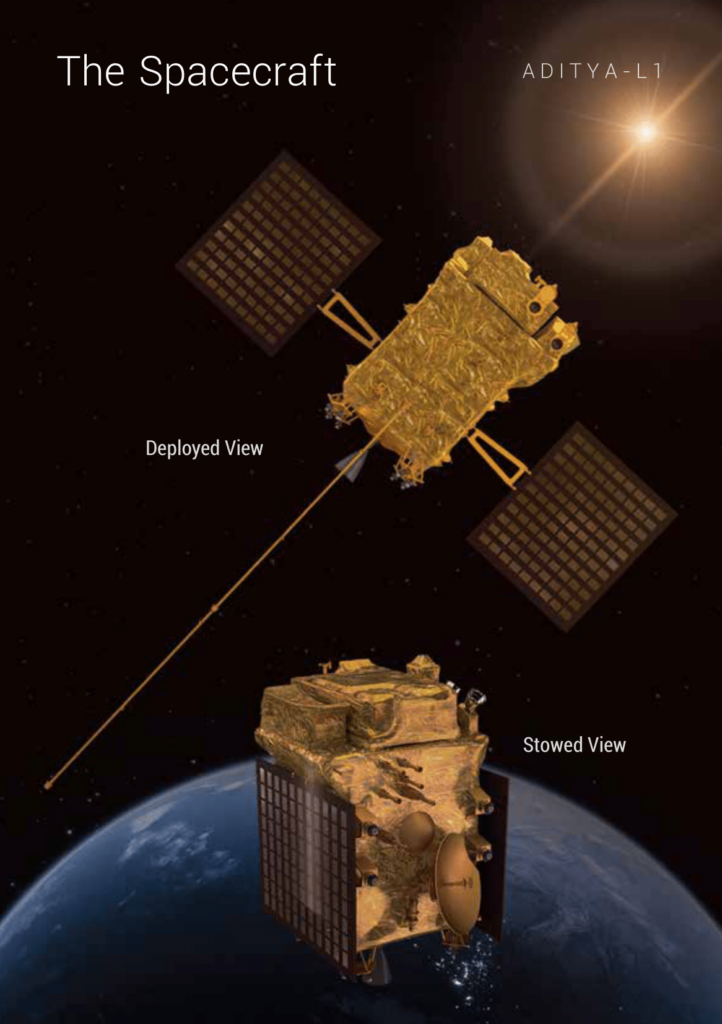Introduction Aditya-L1
In a monumental stride towards advancing space exploration and scientific research. India is poised to launch its first-ever space-based observatory dedicated to studying the Sun. The much-anticipated Aditya-L1 mission is scheduled for liftoff on September 2, 2023, at 11:50 AM IST. Aditya-L1 is launch from the Sriharikota launch site. This groundbreaking initiative underscores India’s growing prowess in space technology. And also promises to unravel the mysteries of our nearest star, the Sun.

Unveiling Aditya-L1:
Named after the solar deity “Aditya,” the Aditya-L1 mission is a testament to India’s commitment to pushing the boundaries of scientific knowledge. This ambitious endeavor aims to provide invaluable insights into the Sun’s dynamic behavior, solar wind, and its impact on Earth’s space environment.
Scientific Objectives of Aditya-L1:
- Studying Solar Activity: Aditya-L1 will equip scientists with a closer look at solar dynamics, including sunspots, solar flares, and coronal mass ejections. This knowledge will contribute to a better understanding of the Sun’s behavior and its influence on space weather.
- Unraveling Solar Wind: The mission seeks to explore the origins and acceleration mechanisms of solar wind. A constant stream of charged particles from the Sun that shapes the space environment around our planet. By deciphering solar wind dynamics, scientists can enhance their ability to predict and manage space weather events that impact satellite communication, GPS navigation and power grids.
- Mapping Magnetic Fields: Aditya-L1 will provide detailed maps of the Sun’s magnetic field. Offering critical insights into its complex structure and dynamics. This information is pivotal for comprehending the mechanisms behind solar flares and their potential effects on Earth.
- Solar Corona Studies: The mission will observe the solar corona, the Sun’s outermost layer, during solar eclipses. This will enable scientists to investigate the coronal heating problem – a long-standing puzzle in solar physics – and shed light on the extreme temperatures observed in the corona.
Impact and Collaboration:
The launch of Aditya-L1 marks a significant milestone not only for Indian space research but also for global scientific collaboration. The data collected by the observatory will be shared with international space agencies and researchers. Fostering a collaborative effort to enhance our understanding of the Sun and its impact on our solar system.

Conclusion:
As the countdown to the Aditya-L1 launch draws near the world. Eagerly anticipates the wealth of knowledge and discoveries this space-based observatory will unveil. With its cutting-edge technology and ambitious scientific objectives. Aditya-L1 stands as a testament to India’s dedication to advancing space exploration. And also harnessing the power of science to illuminate the mysteries of the universe. The journey to explore the Sun has just begun. And the insights gained from this mission will undoubtedly shape our understanding of our celestial neighborhood for generations to come.

